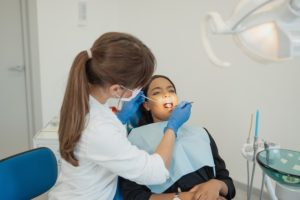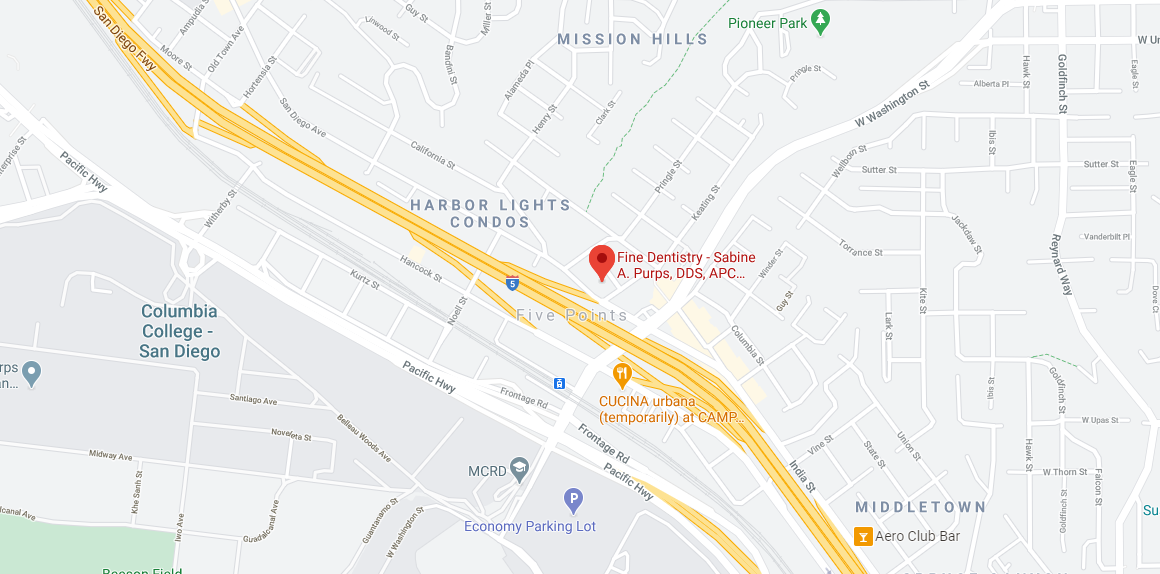Porcelain Fixed Bridges in San Diego, CA
Fix Your Smile with Permanent Dental Bridges

What Are Fixed Dental Bridges?
Fixed dental bridges replace one or more missing teeth, up to four in one bridge. They’re non-removable appliances with artificial teeth (pontics) connected to crowns (abutment teeth) placed on adjacent natural teeth or dental implants. Porcelain dental bridges are exceptionally durable, ensuring years of reliable function.
Benefits of Fixed Dental Bridges
There are many benefits of fixed porcelain bridges, such as:
- Restored Functionality: Bridges fill the gap left by missing teeth, restoring the ability to chew and speak properly.
- Preserved Facial Structure: By preventing the shifting of adjacent teeth, fixed bridges help maintain the natural shape of your face.
- Enhanced Aesthetics: They provide a natural-looking solution, improving the appearance of your smile and boosting self-confidence.
- Durable and Long-Lasting: Properly cared for, fixed bridges can last many years, offering a reliable and durable tooth replacement option.
- Prevent Further Dental Issues: Bridges prevent other teeth from shifting out of place, potentially avoiding future dental complications.
- Improved Oral Health: They aid in distributing the forces of your bite evenly, potentially reducing stress on surrounding teeth.
- Non-Invasive Solution: Unlike some alternatives, fixed bridges typically require minimal alteration of adjacent teeth for placement.
Candidacy for Fixed Dental Bridges

- Tooth Condition: Candidates must have strong, healthy adjacent teeth or sufficient jawbone support for implant-based bridges.
- Overall Oral Health: Good oral health is crucial. Conditions like gum disease or tooth decay need treatment before considering a bridge.
- Number of Missing Teeth: Bridges are ideal for replacing one or more adjacent missing teeth.
- Bone Density: Sufficient bone density in the jaw is necessary, especially for implant-supported bridges.
- Patient Preferences: Understanding patient preferences and lifestyles helps in recommending the most suitable bridge type.
- Consultation with a Dentist: A dental professional can assess oral health, discuss options, and determine candidacy based on individual circumstances.
The Fixed Dental Bridge Placement Process
Preparation Phase
Discuss your needs and concerns with Dr. Purps to begin the journey to personalized tooth replacement. Examination and X-rays help assess oral health and plan the dental bridge placement. A personalized treatment plan is developed, considering the type of dental bridge, the number of missing natural teeth, and overall oral health.
Bridge Placement Procedure
If traditional bridges are used, the adjacent teeth are prepared by removing a portion of enamel to accommodate crowns. For implants, surgical placement on either side of the gap in the jawbone is required. Precise impressions of your teeth are taken to create a customized bridge that perfectly fits your mouth. A temporary bridge is placed to protect exposed teeth and gums while the permanent bridge is being crafted.
Final Placement and Follow-Up

Caring for Fixed Dental Bridges
Some aftercare instructions for fixed dental bridges include:
- Oral Hygiene Routine: Brush your teeth at least twice a day using a soft-bristled toothbrush and fluoride toothpaste. Floss daily to clean between the teeth and beneath the bridge.
- Regular Dental Visits: Schedule routine dental check-ups and professional cleanings every six months or as recommended by your dentist to monitor the bridge’s condition and overall oral health.
- Healthy Diet: Consume a balanced diet rich in nutrients, avoiding excessive sugary or sticky foods that can compromise dental health.
- Avoid Damaging Habits: Refrain from biting hard objects or using your teeth to open packages to prevent damage to the bridge.
- Protective Mouthguard: If you grind your teeth or play contact sports, consider using a mouthguard to protect the bridge and surrounding teeth.
- Prompt Dental Attention: Report discomfort, looseness, or damage to your fixed dental bridge to your dentist immediately for prompt evaluation and repairs.
Frequently Asked Questions
Does getting an implant-supported dental bridge hurt?
Implant-supported bridges typically involve minimal discomfort during and after the procedure due to local anesthesia and advancements in dental technology, ensuring a relatively painless experience. Your dentist will ensure you’re comfortable during your dental implant procedure.
Does insurance cover the cost of an implant-supported dental bridge?
Insurance coverage for an implant-supported bridge varies among providers and policies. Some plans may offer partial coverage, while others might not include it in their benefits. Check with your insurance provider for details regarding coverage.
How long does an implant-supported dental bridge last?
Implant-supported bridges are designed for long-term use, often lasting a decade or more with proper care and maintenance. However, factors like oral hygiene, overall health, and habits can influence their longevity. Schedule routine dental visits to make the most of your dental restoration.
How long is recovery after receiving an implant-supported dental bridge?
Recovery after receiving an implant-supported dental bridge varies from person to person. Typically, initial healing takes a few days to a week, during which mild discomfort or swelling might occur. Full recovery, including the integration of the dental implants with the jawbone, might take several months. Your dentist will provide detailed post-procedure care instructions to ensure smooth recovery.
Restore Your Smile with Implant Bridges
Take the first step towards a healthy teeth revitalized smile. Reach out to our San Diego dental office today to explore porcelain fixed dental bridges, and embark on a journey to a restored, natural-looking smile that boosts your confidence and oral well-being. Call (619) 295-6500 to schedule a consultation today. We also welcome patients from Carlsbad, Chula Vista, and Coronado.

